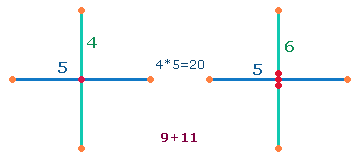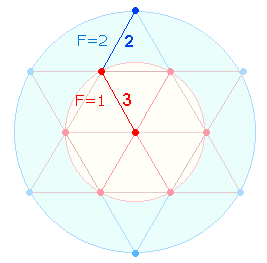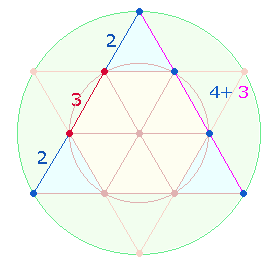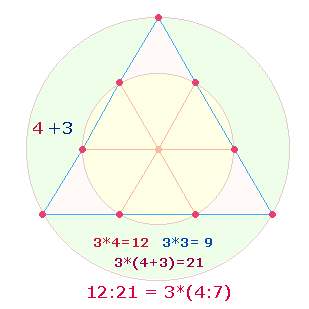SHAKESPEARE'S GEMATRIC CONSTRUCTION OF HIS EPITAPH
REVIEW
2014 on the four Y-words
I. Introduction
III. Calculations
IV. WILLIAM
I. Introduction
1. At
a distance of five years I wonder how many things I compiled on the 4 Y-words YE
YT
YT
MY. So I've made up my mind to review the main trains
of thought, in order to see what results are still reliable and what others
possible move away from firm ground.
2. Shakespeare's
epitaph may be called a cryptogram in that the poet encodes his deepest beliefs
which he shares only with the eternal power he feels responsible to, and with
those who have gained sufficient insight into his cryptic science – or rather
"divine science", because in TRUTH there is nothing irrational and arcane, but
spiritual clarity.
3. Five
years later I still keep up my principal views:
–
Shakespeare gained full
knowledge of the Roman gematric system. Whether it survived in some way or was
reconstructed during Renaissance, is so far unexplored. Evidence increases that
Shakespeare spent several of his "lost years" in
–
A lot of circumstances
surrounding Shakespeare's life suggest that he inclined to "the old
faith". When I started examining his epitaph, I was far from conjecturing
any Catholic evidence in it. But in the end, gematric results convinced me that
MY refers to the Virgin MARY, mother of Jesus Christ.
In
matters of extraordinary and exceptional achievement we should not underestimate
the motive of religion which may be even the strongest impetus for perfect
works of art. Highest aspirations may have urged Shakespeare to equal his
poetical forerunner OVID in
order to reconcile and combine the wisdom of Heathen and Christian cultures.
4. The Elizabethan
alphabet consists of 24 letters (The letters I/J and U/V take a single
alphabetical position each). The new letter W moves X from its 21st position up to the 22nd. Shakespeare may have
found that the W fitted better to position 21, as it shows the
inverted shape of the M and so consistently corresponded to their
alphabetical positions 21 and 12. As his name WILLIAM starts with a W and ends with an M, Shakespeare may have
regarded this single addition as a significant improvement of the alphabet
during the Christian Era.
5. We may imagine that
exceptional men like Shakespeare live their beliefs in a radical and principal
way. They are more aware than others of their unique historic task. So
Shakespeare may have understood the sense of his life in making the best of
religious intolerance by completely concealing his religious beliefs and
expressing truth only by narrative imagery. It is a process in which truth
works up from its depths and comes to the surface in refracted metaphoric transformations.
Shakespeare may have felt to live an existence like Hamlet or King Lear's fool.
A famous dictum may therefore be adapted also to the Y-words: Verum
quia absurdum
– It's true because it's absurd. The system of numbers reveal such
divine wisdom that it is justification in itself: The truths it grants need not
and cannot be communicated because they require a mystic, religious and
mathematical mind. So literature, founded on gematric construction, may
represent the strongest polarity between the INVISIBLE and the VISIBLE, between truth and its
illusionary surface. In this way Shakespeare became the wor(l)d's greatest
poet, the poet par excellance.
6.
I do not want to re-write the
many implications of the Y-words.
I'd rather like to give the subject a new clear and rational foundation so that
the reader may get a better understanding of what I wrote five years ago. I
leave those studies unchanged although I believe that some of the earlier
concepts can be abandoned.
1.
The letter Y
with three lines meeting in the centre is a strong trinitarian symbol.
2.
The possessive pronoun MY,
which Shakespeare was determined to use, forms the first and last letter of MARY.
There
are two reasons for his intention: First,
when crucified Jesus said to his disciple John: "Behold thy mother",
every person, according to the Christian faith, can call Mary their mother.
Thus Shakespeare may have pleaded to her as "MY heavenly mother".
The
second reason is
of gematric nature: The numeric sum (NS), the NS + factoral sum (NS+FS) and the 4values of IESUS are 70, 106 and 130. The NS of MY is 35, the NS of MARY 53, the NS+FS of MY 65, in each case
half the sum of IESUS.
Furthermore, the 4v-sum of MY is 87, which is half the sum of the NS+FS of SHAKESPEARE (103+71).
Finally, IESUS and MARIA have ideal NS: 70 and 40, which means a ratio of 10*(7:4). The NS of WILLIAM is 74. Likewise the NS 94 = 2*47 of OVIDIUS has to be
considered.
3. The
redemption of mankind starts with the ANNUNCIATION
of the Angel Gabriel and ends with Jesus' Crucifixion. At the beginning Jesus
is conceived in Mary as her son, at the end Jesus entrusts all mankind to his
mother as her children.
4. The
true belief in Jesus Christ starts with what the Angel tells Mary about the son
she is to conceive: He is "Son of the Highest", and "Son of
God". The Greek words are (H)YIOS (H)YPSISTOU and (H)YIOS THEOU.
5. The
letter "thorn" (þ) was often written like a Y so that the article "THE" and "THAT" were represented by Y plus superscript E and T. Shakespeare makes creative use
of this ambiguity by YE YT YT MY. In the first case Y means TH both in Greek and English, in the
next two cases Y in Greek and TH in English, in the last case Y in Greek and English.
6. According
to the initials of the Greek words YE corresponds to THEOU, twice YT to (H)YIOS and MY to (H)YPSISTOU. But Shakespeare deals with
this correlation rather formally. Thus YE can be
equalled to THE(OU), YT twice be understood as YIOS THEOU and MY as MARIAE YIOS. The
four Y-words are no end in themselves, but are meant to mark
two semicircles.
Five
years ago I made calculations including the letter H. Now I have arrived at more
convincing results by omitting the H.
However, Shakespeare might have carried out alternative calculations. If the H is counted, its NV+FV 8+6 = 14 have to be added. For example, the NS+FS of
the three Greek words starting with H
is 527 (s. below) without the H, and 569
with the H. 569,
which is prime, is the NS
of the 11 alliteration words. This might be mere
chance, but also could have been chosen by Shakespeare according to this
particular calculation.
7.
Y
is the 22nd of the
Latin and the 23rd
of the Elizabethan alphabet. Shakespeare knew about the meaning of the two
numbers in their one-digit state. I regard my explanations about Y five
years ago still as valid. The factoral value of 22 = 2*11 = 2+11 = 13 shows the two combinations of 4, a quadratic and a trinitarian aspect. The two
combinations are relatable to the double circles of the hexagram:
|
|
(F = area size)
The
numbers equate radial elements with area size: 3 radial elements
of the inner circle stand for 1
area unit, 2 radial elements of the outer ring for 2 area units.
Shakespeare
responded to these two combinations of the number 4 by determining the epitaph's numerical sum (NS) 1242 + factoral sum (FS) 971 to total 2213.
The two letters of MY have
a similar one-digit pattern: 12+23.
The
geometrical model for 22
is the double rhombus with 11 elements
for each rhombus. The double aspect of two
and one midpoints produces the composite result 22+21 = 43.
The four
single numbers also appear in the difference between the FS of both epitaphs and their NS: 2738-2056 = 682 = 22*31.
The 4values of the two numbers amount to 102, which is the NS of PENSATOR,
the 8 different letters of the
SATOR square:
|
|
Gr |
El |
sm |
FV |
sm |
|
NV |
22 |
23 |
45 |
11 |
56 |
|
FV |
13 |
23 |
36 |
10 |
46 |
|
|
35 |
46 |
81 |
21 |
102 |
|
21:81 = 3*( |
|||||
8.
Shakespeare
counts the Y as 22 in the Greek words and as 23 in the English words.
1. In
three ADDENDA I dealt
with the 4values of
Ovid's and Shakespeare's epitaphs. The importance of the Y-words has to be verified mainly on that basis.
2. Shakespeare's
intention to make the letter Y a main theme may have been strongly encouraged
after establishing the 4values of
IESUS and MARIA:
|
|
NS |
FS |
FV1 |
FV2 |
|
|
MARIA |
40 |
32 |
11 |
10 |
93 |
|
IESUS |
70 |
36 |
14 |
10 |
130 |
|
|
110 |
68 |
25 |
20 |
223 |
|
93 = 3*31; 130 = 10*13 |
|||||
223, which is prime, can be split into 22+23. The factors of both names contain the trinitarian
numbers 31 and 13. The NS
of line 4 of the
epitaph is 313.
Furthermore, the number 223 is to be understood as
representing 3 hexagonal elements plus 2+2 extension elements for each of
the 3 tetractys sides:
|
|
It's
possibly for this connection between the two names and the tetractys that all 4 Y-words are divisible by 7
and the total NS 147 by 21 = 3*7.
3. We
can observe another coincidence possibly intended by Shakespeare, if we add the
4values of CHRISTUS:
|
|
NS |
FS |
sm |
FV1 |
FV2 |
sm |
|
MARIA |
40 |
32 |
72 |
11 |
10 |
93 |
|
IESUS |
70 |
36 |
106 |
14 |
10 |
130 |
|
|
110 |
68 |
178 |
25 |
20 |
223 |
|
CHRISTUS |
112 |
76 |
188 |
15 |
23 |
226 |
|
|
222 |
144 |
366 |
40 |
43 |
449 |
|
144:222
= 6*(24:37) = 6*61 |
||||||
The NS 74 of WILLIAM is
one third of the NS 222 of the three names.
Shakespeare
may have adapted the number and kind of letters he used to the 4value-sum 449:
|
|
A |
B |
C |
D |
E |
F |
G |
H |
I/J |
K |
L |
M |
N |
O |
P |
Q |
R |
S |
T |
V/U |
W |
X |
Y |
Z |
|
|
NV |
1 |
2 |
3 |
4 |
5 |
6 |
7 |
8 |
9 |
10 |
11 |
12 |
13 |
14 |
15 |
16 |
17 |
18 |
19 |
20 |
21 |
22 |
23 |
24 |
217 |
|
FV |
1 |
2 |
3 |
4 |
5 |
5 |
7 |
6 |
6 |
7 |
11 |
7 |
13 |
9 |
8 |
8 |
17 |
8 |
19 |
9 |
10 |
13 |
23 |
9 |
170 |
|
NS |
FS |
sm |
FV1 |
FV2 |
sm |
tot |
|
217 |
170 |
387 |
38 |
24 |
62 |
449 |
Shakespeare
omitted 4 out of 24 letters of the Elizabethan alphabet.
4.
After perhaps some experimenting
Shakespeare found the decisive combination of Greek and Latin words: MARIAE YIOS:
|
|
NS |
FS |
sm |
FV1 |
FV2 |
sm |
tot |
|
MARIAE |
45 |
37 |
82 |
11 |
37 |
48 |
130 |
|
YIOS |
63 |
36 |
99 |
13 |
10 |
23 |
122 |
|
sm |
108 |
73 |
181 |
24 |
47 |
71 |
252 |
|
252 = 21*12;
108:144 = 36*(3:4) |
|||||||
|
63:45 =
9*(7:5) = 9*12 |
|||||||
Surprisingly,
the 4values of MY and
MARY produce
the same result 252:
|
MY |
35 |
30 |
65 |
12 |
10 |
22 |
87 |
|
MARY |
53 |
48 |
101 |
53 |
11 |
64 |
165 |
|
sm |
88 |
78 |
166 |
65 |
21 |
86 |
252 |
The NS-ratio 108+88
against the other 3 values
is 196:308
= 28*(
The
product numbers 21
and 12
correspond to the first and last letters of WILLIAM.
So Shakespeare can feel himself as it were embraced as a son of Mary.
The
ratio 3:4
can be associated to the number 223 and one side of the tetractys.
122 is the NS of two TENET
axes of the SATOR square:
|
|
5. Now
first the 4values of the
four Greek words and then of the four Y-words
have to be established:
|
|
NS |
FS |
sm |
FV1 |
FV2 |
sm |
tot |
|
YIOS |
63 |
36 |
99 |
13 |
10 |
23 |
122 |
|
YPSISTOU |
135 |
80 |
215 |
14 |
13 |
27 |
242 |
|
|
198 |
116 |
314 |
27 |
23 |
50 |
364 |
|
YIOS |
63 |
36 |
99 |
13 |
10 |
23 |
122 |
|
THEOU |
66 |
48 |
114 |
16 |
11 |
27 |
141 |
|
|
129 |
84 |
213 |
29 |
21 |
50 |
263 |
|
sm |
327 |
200 |
527 |
56 |
100 |
627 |
|
|
527 =
31*17; 627 = 57*11 =
FV 33 |
|||||||
|
YE |
28 |
28 |
56 |
11 |
11 |
22 |
78 |
|
YT |
42 |
42 |
84 |
12 |
12 |
24 |
108 |
|
YT |
42 |
42 |
84 |
12 |
12 |
24 |
108 |
|
MY |
35 |
30 |
65 |
12 |
10 |
22 |
87 |
|
sm |
147 |
142 |
289 |
47 |
45 |
92 |
381 |
|
total |
474 |
342 |
816 |
103 |
89 |
192 |
1008 |
|
527:289
= 17*(31:17) = 48*17 = 8*102 |
|||||||
|
1008 = 4*252; 816:192 = 48*(17:4) |
|||||||
The
number 252,
which is the 4value-sum of YIOS MARIAE, is contained in the total sum 1008 four
times, and 108, which
is the NS of YIOS MARIAE and the 4value-sum of
YT (=YIOS
THEOU), ten
times.
364 is twice the NS of SATOR OPERA TENET,
263
is the NS of line 2. 102 is the NS
of YPSILON.
1008 is also 21*54.
It may be for this reason that Shakespeare chose 54 as product number for the NS 1242 of the epitaph.
6. The
4values of
the corresponding English and Greek words are:
|
YE |
78 |
THEOU |
141 |
219 |
|
YT |
108 |
YIOS |
122 |
230 |
|
YT |
108 |
YIOS |
122 |
230 |
|
MY |
87 |
YPSISTOU |
242 |
329 |
|
|
381 |
|
627 |
1008 |
|
141:329
= 47*(3:7)
= 470 |
||||
|
470+460
= 930+78 =
1008 |
||||
|
930 = 30*31; 78 = 6*13 |
||||
3*47 = 141 is also the NS of FOR IESVS SAKE
and a main trinitarian number: 347,
a prime number, is the NS
of PATER (57), FILIUS (73), SANCTUS (92) SPIRITUS (125: 217).
A good reason for assuming that Shakespeare associated MY with MARIA is furnished by the NS 217 = 7*31 of SANCTUS SPIRITUS, with which
the 4values of IESUS and MY are identical:
|
|
NS |
FS |
sm |
FV1 |
FV2 |
sm |
tot |
|
IESUS |
70 |
36 |
106 |
14 |
10 |
24 |
130 |
|
MY |
35 |
30 |
65 |
12 |
10 |
22 |
87 |
|
|
105 |
66 |
171 |
26 |
20 |
46 |
217 |
|
66+26+20 = 112; 105:112
= 7*( |
|||||||
It was
by the Holy Spirit that Jesus was engendered in the Virgin Mary. The 4v-sum 93 of MARIA is also divisible by 31:
|
MARIA |
40 |
32 |
72 |
11 |
10 |
21 |
93 |
7.
The external FS:ZS-ratio of YIOS is 36:63 = 9*(4:7), the internal 9*(4:3). The geometrical model
for it is mainly the frame of three tetractys sides:
|
|
Shakespeare
is aware that YIOS has the same NS 63 as VESTA. It's another way to connect
Antiquity with Christianity.
8.
The NS 569, which is prime, may have to do with Shakespeare's
alternative inclusion of the H
in HYIOS (2) HYPSISTOU. It
represents two coordinate axes:

If 5+6 are added to 11, the name of WILLIAM shows the same pattern twice in the inverted
letters IL-LI = 9+11 / 11+9.
1.
Twice YIOS with the NS 2*63 =
126 is identical with the NS+FS of
WILLIAM:
|
|
NS |
FS |
sm |
FV1 |
FV2 |
sm |
GS |
|
WILLIAM |
74 |
52 |
126 |
39 |
17 |
56 |
182 |
The
single digits 6+3 refer
to the frame of the three tetractys sides: 6 hexagonal points and 3 corner points. The inverted FS 36 therefore points to the second tetractys within
the hexagram.
So Shakespeare
feels confidence that through his first name WILLIAM he will be received
benevolently by the Son of God after his death.
2.
WILLIAM
is also connected to the SATOR
square, which is dealt with in another
article.



